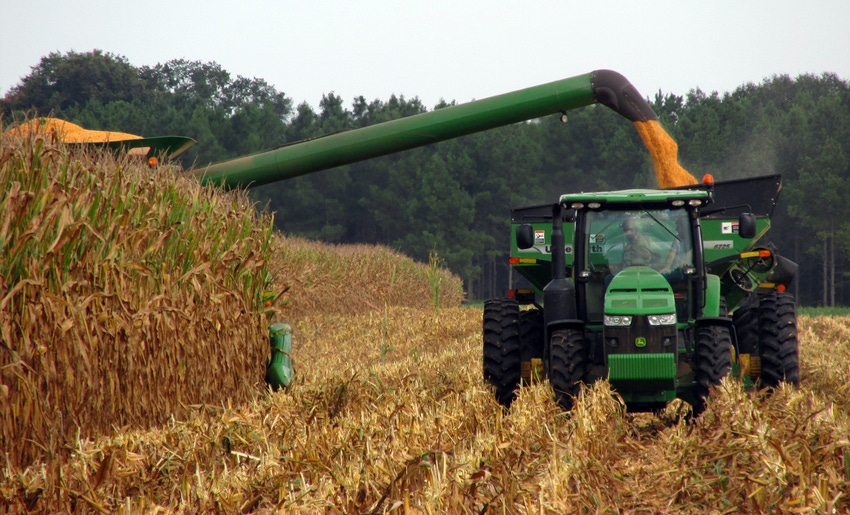
Commodity prices in 2017 don’t promise to change much compared to 2016, but you might be able to change how you approach them and actively manage your risk. Maybe even make some money.
The farm economy is down and farm-level cash flow has flowed better; everyone who cares knows this.
“The sense I get from banks and FSA is that you have groups at different levels financially: some have done better than others with low prices, relying on built-up working capital, cash or low debt, making good yields. Others have experienced losses causing them to burn through the capital they built over the last 10-year period and are having to refinance or borrow to keep farming, and some who haven’t been able to pay out probably won’t be able to or won’t be financed in 2017,” said Nathan Smith, Clemson University Extension farm economist.
(Editor’s note: This is part 1 of a series on marketing and farm finance management. Southeast Farm Press and Clemson University Agribusiness Team will partner to provide information on how to establish your target price and how to best hit it even with subpar market prices, along with a general focus we hope will help you better understand and manage your farm’s business.)
Farmers who have had long-term financial success say the bad times were when they took the aggressive actions to better run the fiscal sides of their operations; it forced them to look harder at how they market their production.
Many farmers already know about and use the strategies we will discuss, but it doesn’t hurt to be reminded of things you already know. Even the most experienced farmer can be confounded from time to time on how to best market crops.
Know your target price
This may seem simple, but it can be tricky to pinpoint for growers. What are you really covering with your breakeven price, or the price you need to average with your commodities to keep the farm’s wheels turning the way you want them to?
“With your target price, you want to cover your variable or operating cost and your fixed cost, and depreciation, overhead, land rent and your salary would fall into that fixed area, for example. If you want to budget growth for the operation, then you’d need to increase the target price to reflect the growth you want to reach,” Smith said. “Or if you want to cover your family living and make the payments that you have to make, you will need to include that in calculating the target price, or what you call your breakeven price.”
An enterprise cost analysis is a good first step to approach the target price; it can help you see more clearly what you really spend.
“Some of it is fairly easy to gather, and that’d be your seed cost, chemicals used and cost and hopefully you know what your fertilizer was for different crops and you know what went where field by field,” he said. “The harder ones are allocating out your fuel, utilities and repairs and allocating your labor expenses.”
There are different methods, he said, you can use to allocate those harder-to-allocate expenses:
By acres – “Say you farmed 1,000 acres and a third of it was peanuts and third of those unallocated costs goes towards peanuts, then a third to cotton and a third to corn or whatever the crop mix and acreage percentage,” he said.
By revenue – What was your gross revenue by the different crops; this would be the more accurate approach because what’s higher in revenue tends to be what’s higher in cost, too.
By Extension budgets – You can use the percentage that’s in these budgets published annually for by most Southeast land-grant institutions and allocate the expenses in similar way for your operation.
Once you complete the cost analysis and you have your target price, you then figure your production history. A few good ways to find or calculate realistic average for your operation is by using:
Your crop insurance-based information.
A 10-year average of your yields.
An Olympic average, which is you drop your highest- and lowest-yielding years for a particular five or 10 years and then average the production from the remaining years.
Once you have the expected yield you want to use, you divide that total cost, right?
“Let’s say you spend $600 per acre of cotton, which might include your time and salary along with production inputs, and your realistic or expected average is around 800 pounds. That gives you your breakeven, or target price, of about 75 cents,” Smith said.
Or, say you spend $600 on dryland corn, and you expect to make 125 bushels in an average year. Your target price for that corn is $4.80 per bushel.
Again, many growers know these things and practice them, he said, but it will be even more important in 2017 to know the details.
Once you have your target, you see what the markets are offering. The next step is to be realistic on whether you can reach your target price for 2017, which doesn’t promise to offer better market prices than in 2016 for most major commodities. But here will movement in the markets up and down, and those will be the times to take your best shots at hitting your target.
About the Author(s)
You May Also Like






